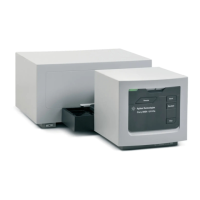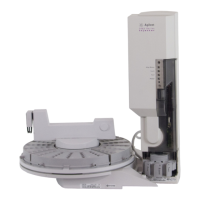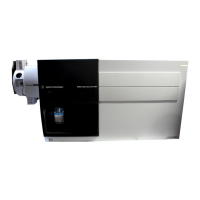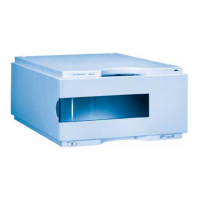5Methods
104 Operation Manual
There are limits to usable range settings for some detectors. The table lists the valid range
setpoints by detector.
Range may be run time programmed. See “Events” for details.
Analog data rates
Your integrator or recorder must be fast enough to process data coming from the GC. If it
cannot keep up with the GC, the data may be damaged. This usually shows up as broadened
peaks and loss of resolution.
Speed is measured in terms of bandwidth. Your recorder or integrator should have a
bandwidth twice that of the signal you are measuring.
The GC allows you to operate at two speeds. The faster speed allows minimum peak widths of
0.004 minutes (8 Hz bandwidth), while the standard speed allows minimum peak widths of
0.01 minutes (1.6 Hz bandwidth).
If you use the fast peaks feature, your integrator should operate at around 15 Hz.
Selecting fast peaks (analog output)
1 Select Settings > Configuration.
2 Select Analog Out.
3 Select the checkbox next to Fast Peaks.
Agilent does not recommend using Fast peaks with a thermal conductivity detector. Since the
gas streams switch at 5 Hz, the gain in peak width is offset by increased noise.
Digital signals
The GC outputs digital signals only to an Agilent data system. The following discussions
describe features that impact the data sent to data systems, not the analog data available to
integrators. Access these features from the data system. These features are not accessible
from the GC touchscreen or Browser Interface.
Zero signal
Available only from an Agilent data system.
Table 12 Range limits
Detector Usable range settings (2
x
)
FID 0 to 13
NPD 0 to 13
FPD+ 0 to 13
TCD 0 to 6
ECD 0 to 6
Analog input 0 to 7

